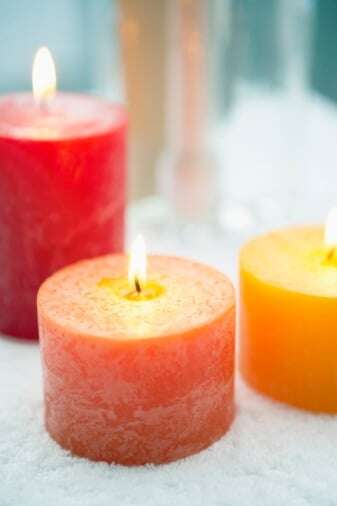 You check the filter on your air conditioner every month, knowing that only a clean filter can effectively capture all the indoor pollutants – dust, dirt, mold spores – that flutter through your home every day.
You check the filter on your air conditioner every month, knowing that only a clean filter can effectively capture all the indoor pollutants – dust, dirt, mold spores – that flutter through your home every day.
You ventilate your home to the best of your ability, using a combination of natural, mechanical and whole-house techniques.
You might even take the extra step of cooking outdoors during the summer. You use all of these home tips because you're concerned about the quality of your home's indoor air – the air your health and well-being and that of your family depend on every day.
Turn to nature's air purifier
While the jury is still out on the effectiveness of air cleaners and air purifiers – at least according to the U.S. Environmental Protection Agency – there is one more step you can easily take to improve your home's indoor air. And this step will require you to make a trip to your favorite gardening center and load up your cart with a few flourishing houseplants.
That's right: certain houseplants are actually considered “air purifiers” because they absorb pollutants and harmful gases from the air. Asthma and allergy suffers already know that certain toxins have trouble written all over their formidable names – names such as benzene, carbon monoxide and formaldehyde. But certain plants can literally nip these toxins in the bud, thereby cleansing the air and restoring balance to indoor humidity levels.
These plants have been identified by people who are vested in preserving the integrity of indoor air in confined spaces: the National Aeronautics and Space Administration. NASA drafted the “top 10” list in partnership with a group that knows more than a few things about plant life: the Associated Landscape Contractors of America.
Why you should care about the air
Ironically, NASA and the ALCA quietly circulated the plant list before an EPA report shook scientists and environmentalists to the core with a thunderous revelation: Indoor pollutants might be two to five times higher – and sometimes even 100 times higher – than outdoor pollutants. Put another way, indoor elements such as biological matter, organic compounds, radon and secondhand smoke can be more harmful to our everyday health than pollution from cars, trucks and factories.
As taxing as indoor pollutants can be on the elderly, asthma and allergy sufferers and adults with respiratory ailments, the EPA noted that “children are more susceptible to air pollution because they breathe a greater volume of air relative to their body weight."
The EPA urged homeowners (and employers) to take proactive steps to improve the quality of indoor air, pointing out that most Americans spend at least 90 percent of their time indoors, not outdoors. Home tips such as buying a few houseplants, and placing them on both levels of your home, is one of the simplest and most economical steps you can take to help purify your home's indoor air.
10 plants for 10 green (or black) thumbs
It might help matters if you have a naturally green thumb, but most of the houseplants on NASA's recommended list are low maintenance and, as an added bonus, resist insects, too. They include the:
- Areca palm, also known as the butterfly palm, which can grow to 10 to 12 feet tall
- Lady palm, which grows more slowly, but can be worth the wait: it can grow up to 14 feet tall and boast robust, thick leaves
- Bamboo palm, another tall “jumper” known to delight indoor gardeners because it eschews frequent watering
- Rubber plant, a fellow moist-is-better plant, which can grow up to 8 feet tall and 5 feet wide
- Dracaena, a robust plant that can grow to 3 feet wide and 10 feet tall
- The durable and hearty Philodendron, which is available in climbing and non-climbing varieties and prefers regular mists of water to stay healthy and vibrant
- Dwarf Date Palm, which grows slowly but steadily and can soar to 10 feet tall
- Ficus Alii, a lush tree-like plant that prefers low-light conditions
- Boston fern, which finds a natural home in hanging containers – even when it spreads up to 5 feet wide
- Peace Lily, whose thick, wide leaves help it rise up to 3 feet tall and 2 feet wide
With a list of such variety, you're bound to find a houseplant that suits your taste – and complements your décor.
Experts In Your Home hopes these home tips help you see why we give houseplants such a spirited thumbs up – green thumbs or black – for providing the greatest benefit of all: improving the quality of the air you and your family breathe every day.








